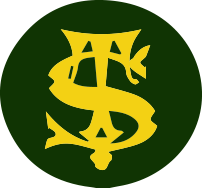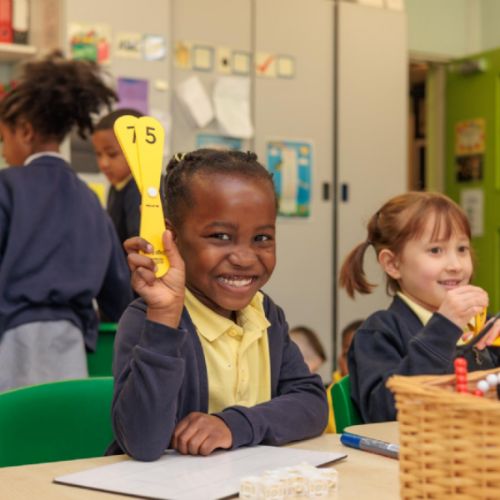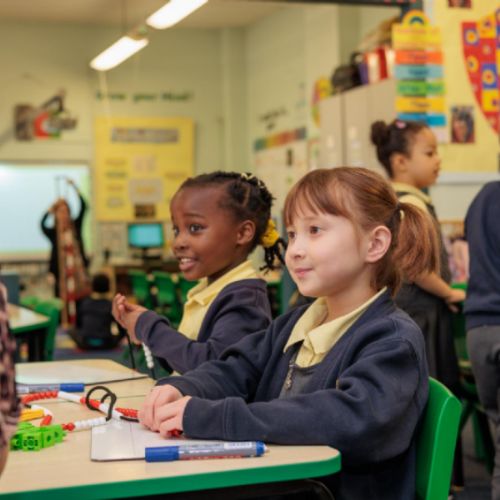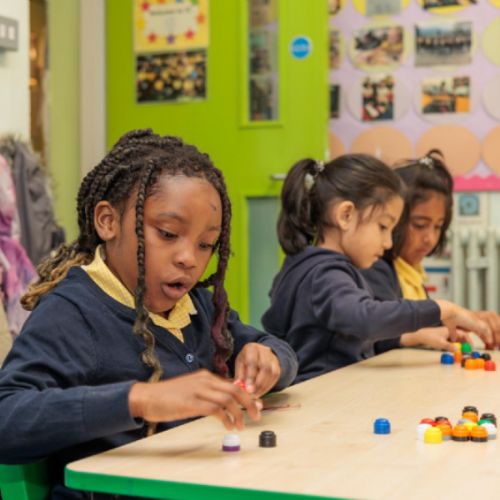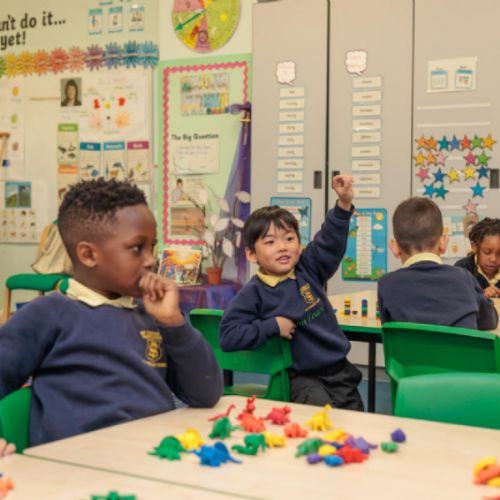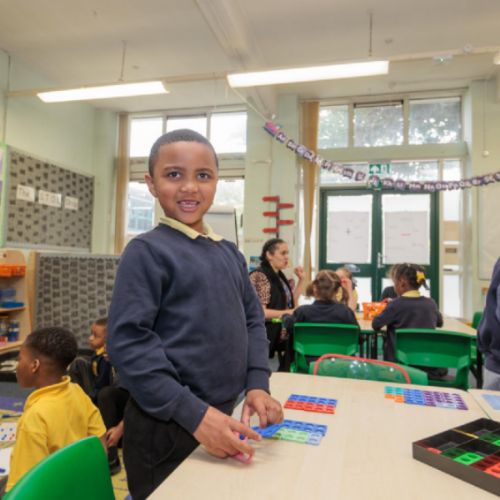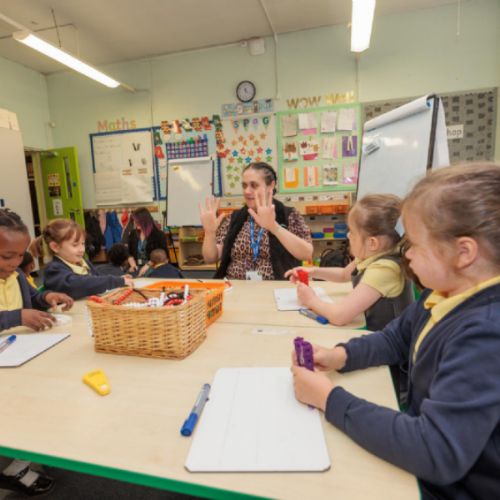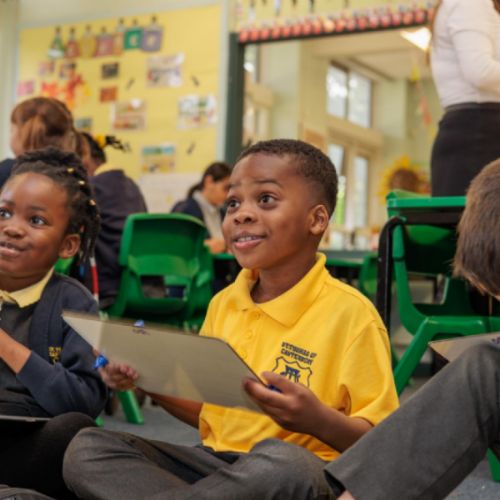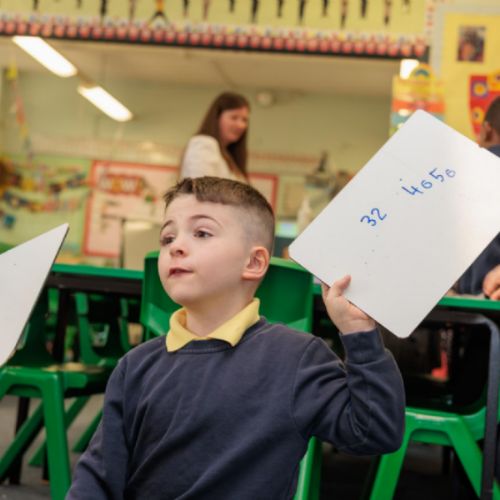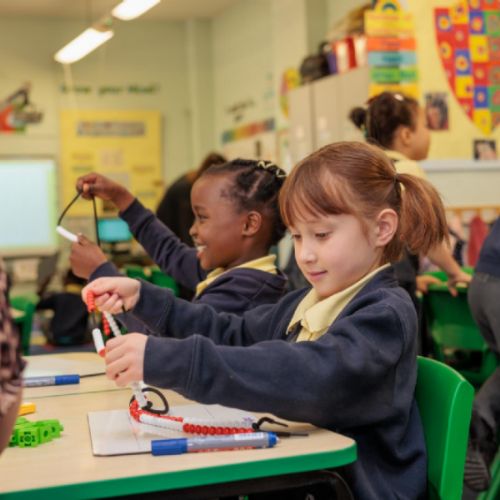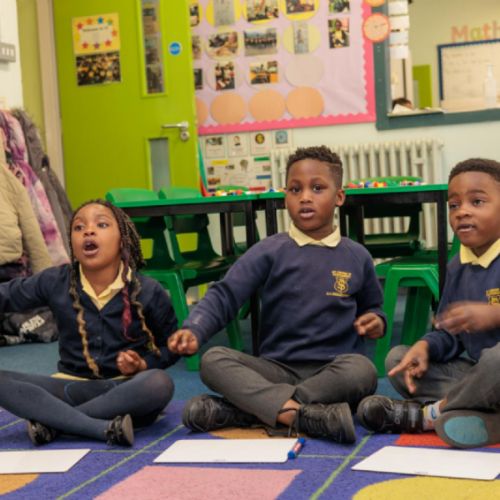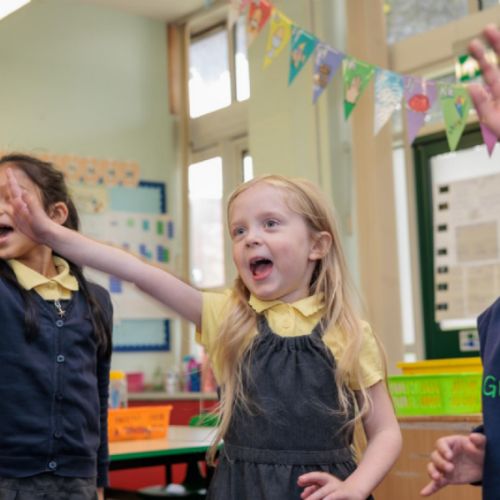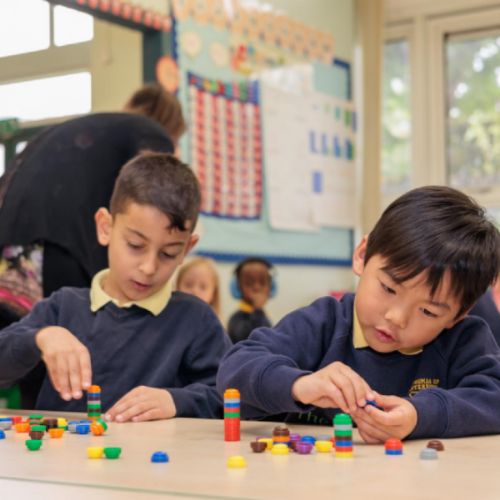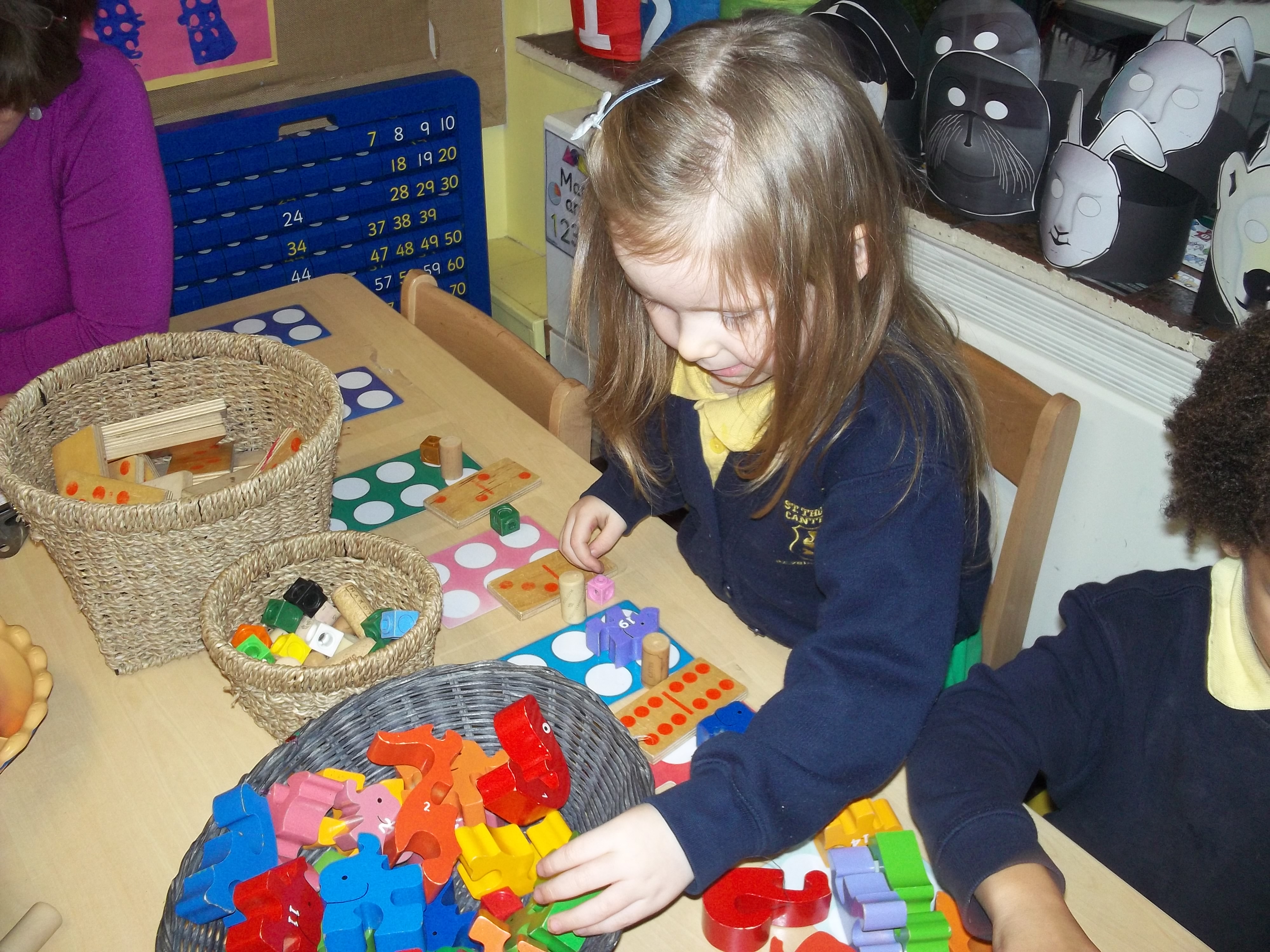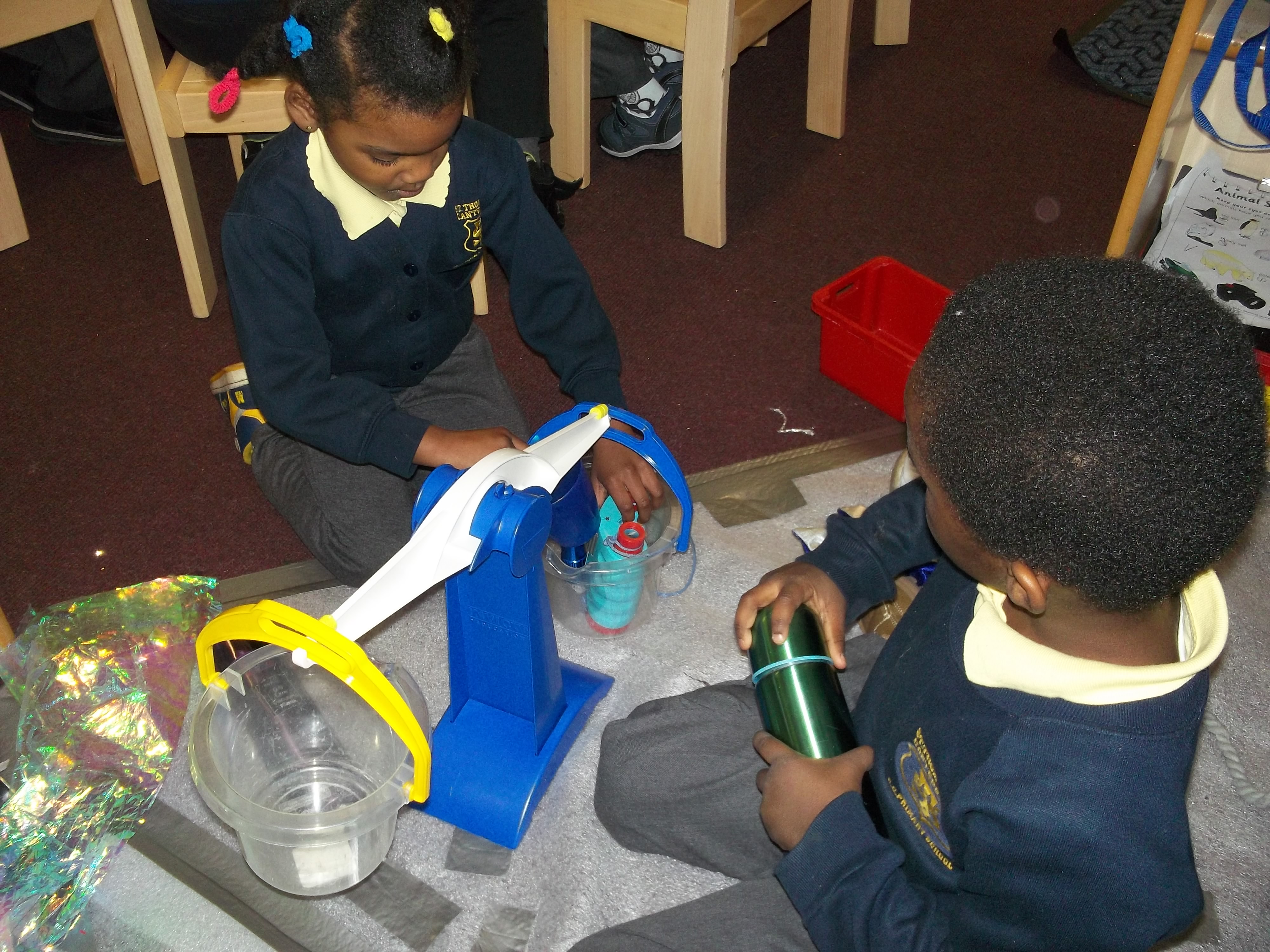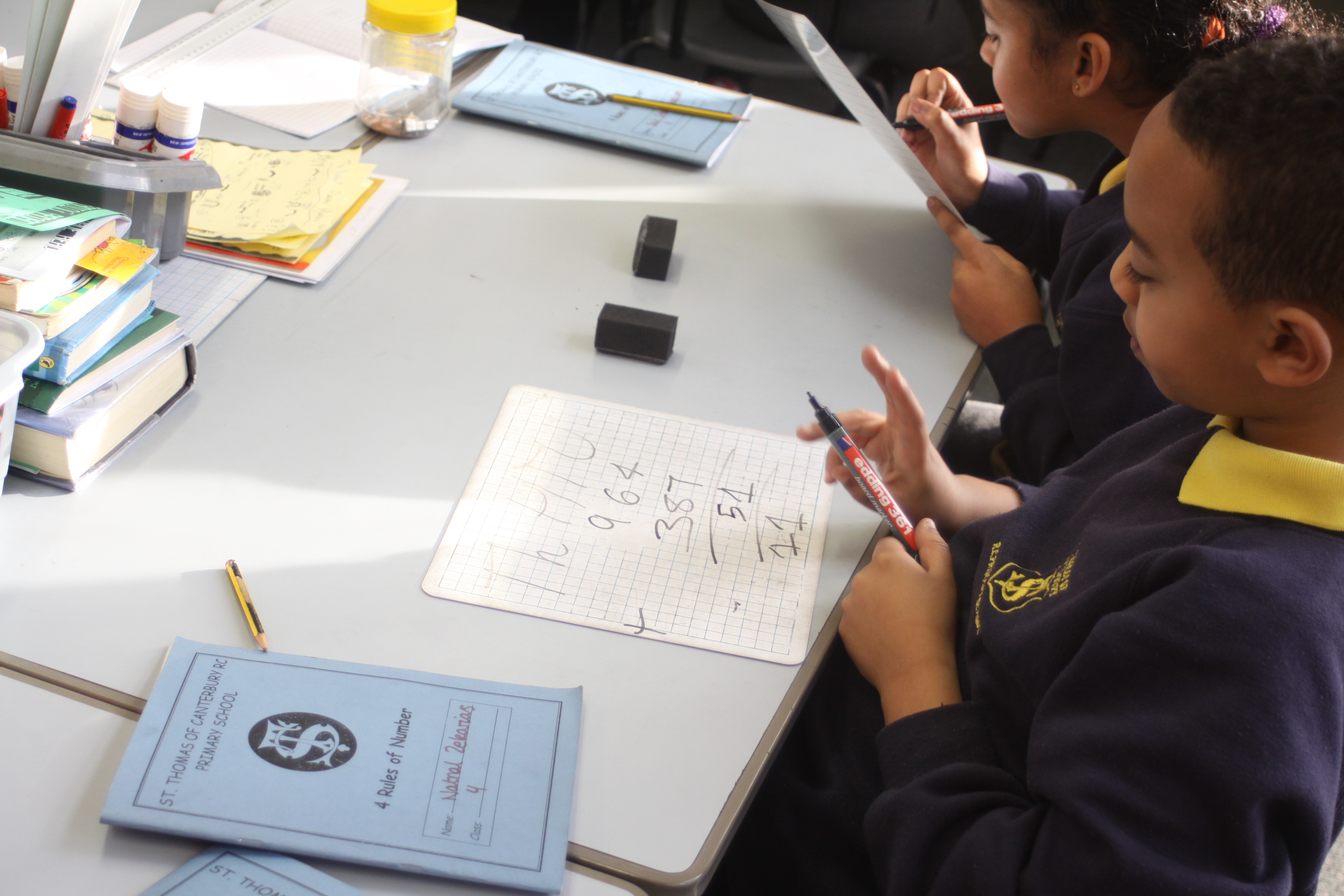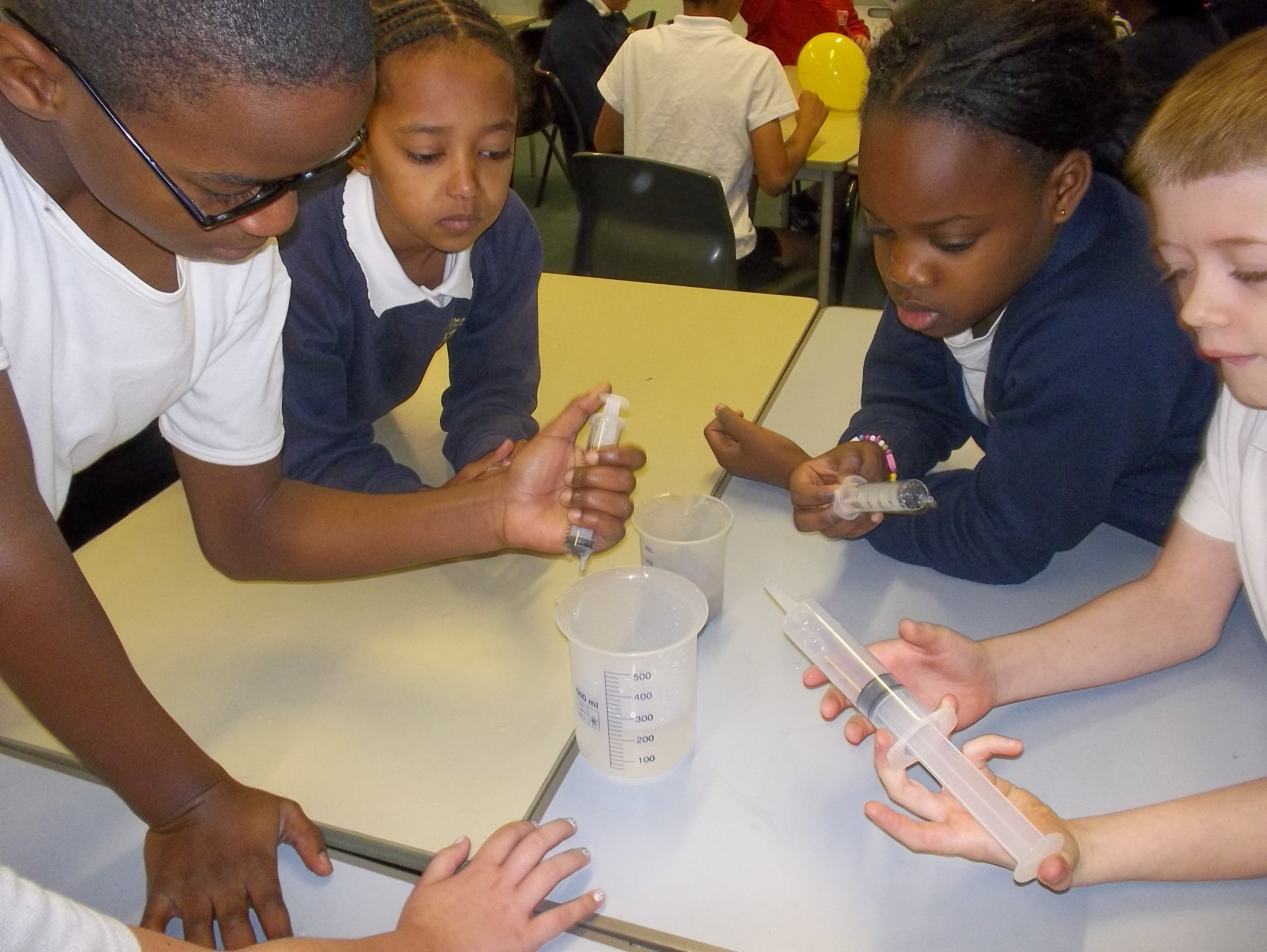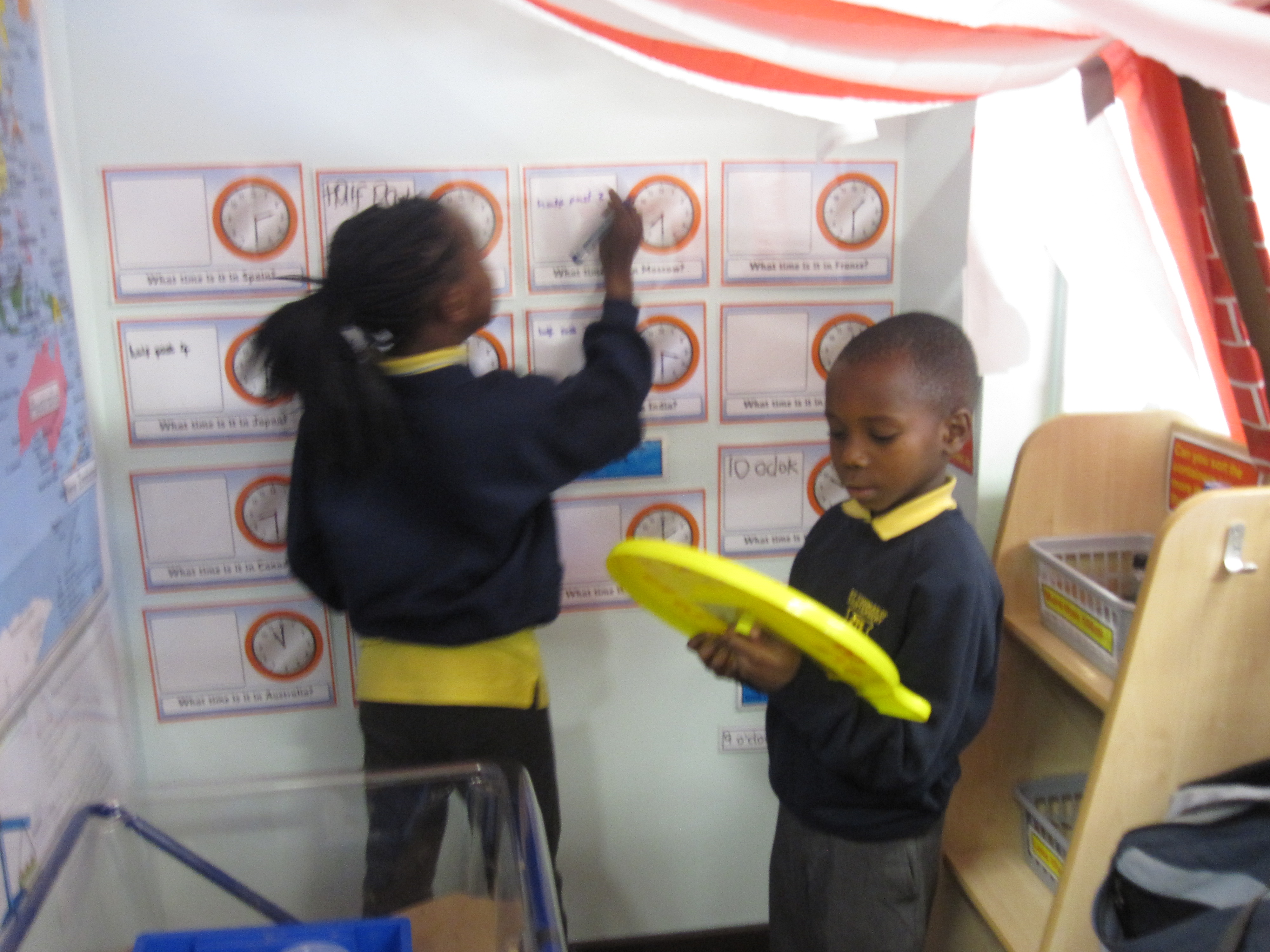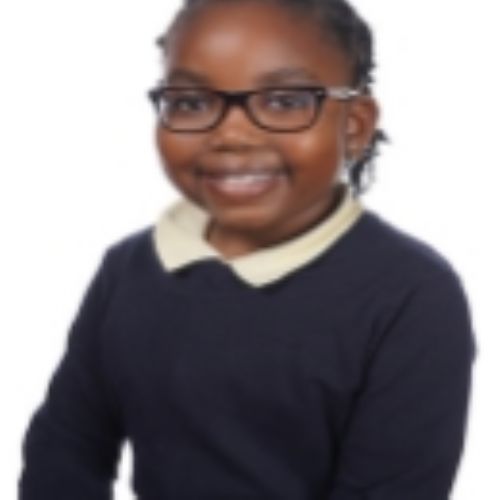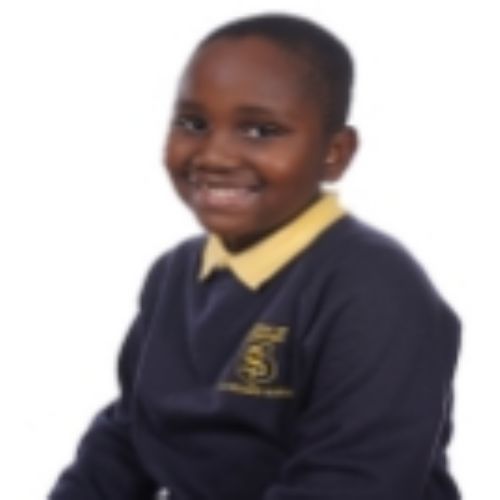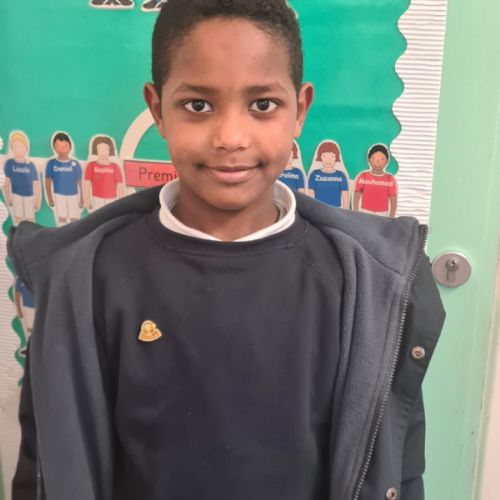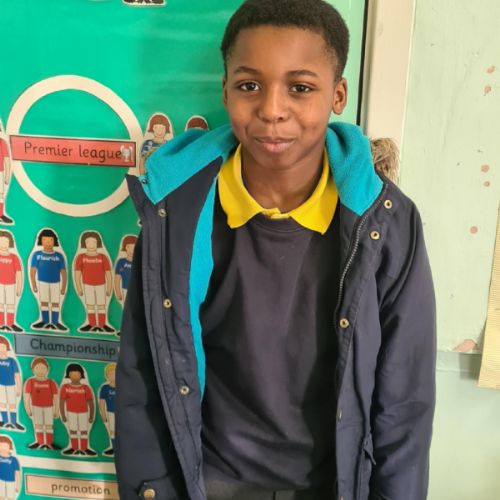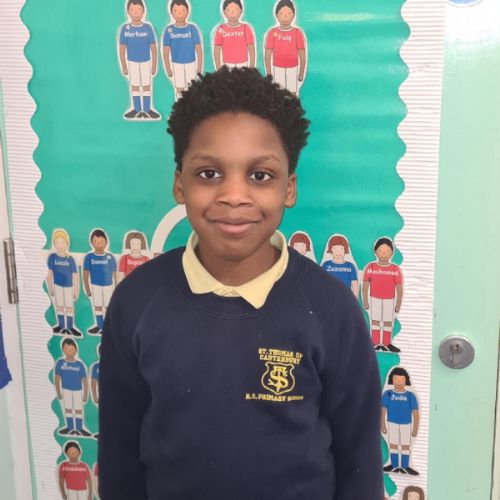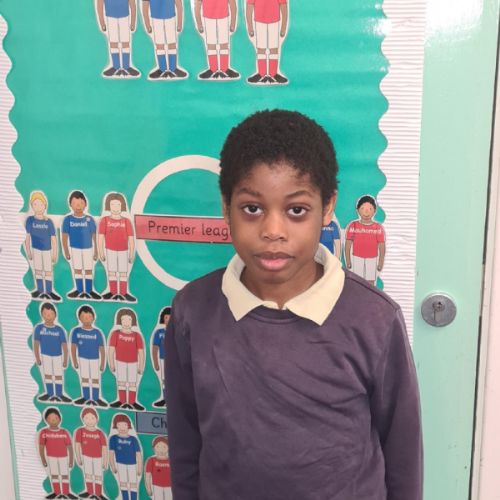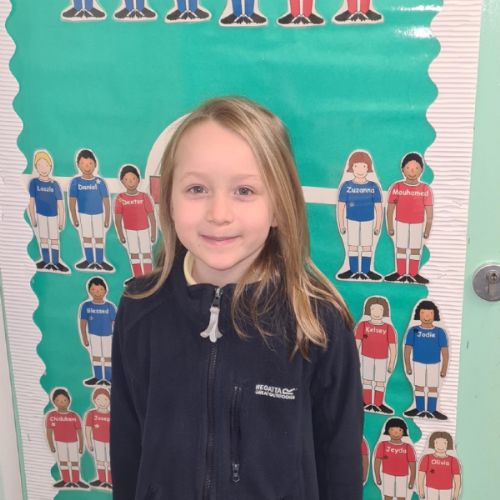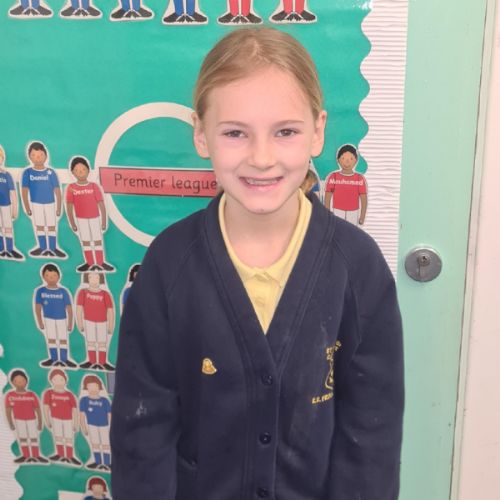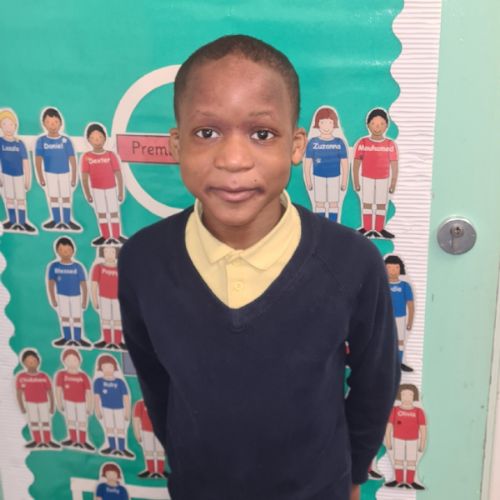Mathematics
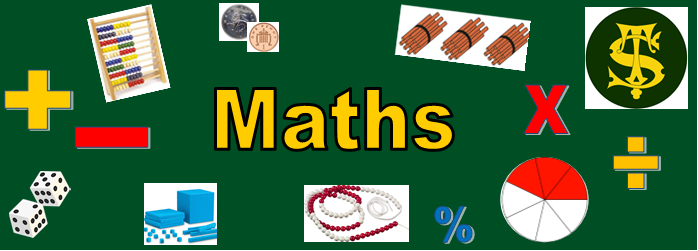
"Teach us to count up the days that are ours, and we shall come to the heart of wisdom.”
Psalm 90:12
Our vision and culture provides all children with an inter-connected and creative mathematics curriculum that excites curiosity and equips them for today and long into the future.
Everyone can do Maths! Each and every one of our children are on the same learning journey, with the same learning opportunities, throughout our school. We recognise that children grasp concepts at different paces yet all children become masters of the curriculum, with those who rapidly grasp a concept delving deeper.
Problem solving is central to the learning journey. This provides our children with a purpose to develop their fluency in the fundamentals of mathematics. The learning journey includes a concrete-pictorial-abstract approach, with language and reasoning being a key feature throughout, thus supporting our children in developing a deep, conceptual understanding and making rich connections across mathematical ideas.
We recognise the important role that a good vocabulary and reading comprehension plays in solving problems. They help our children to understand the issues being presented to them by distinguishing between what is known and what is being asked. This aids our children in being able to translate problems into mathematical models.
Our children apply and develop their numeracy and mathematical reasoning across the curriculum. Examples of this include: using reasoning skills to decipher what a number of Neolithic artefacts are and their purpose, in history; understanding and using measures in geography; making estimates of time/distance/weight in design and technology, geometric understanding in art; algebraic understanding in music; understanding the cycle of collecting, presenting and analysing data in science.
Through the maths curriculum, that we provide, our children are building a solid foundation for understanding the world, appreciating the beauty and wonder of mathematics and becoming equipped for life today and long into the future.

All of our children are following the National Curriculum programmes of study for mathematics. Every child masters each concept, by developing a deep understanding, before moving onto new learning. Grasped concepts are revisited and applied daily to embed the learning, build fluency and to continually make connections.
Throughout the learning journey, new language and sentence stems are explicitly modelled and explored with the children. They are provided with rich opportunities and are encouraged to use the language of mathematics so they become fluent in its use.
We use a highly effective approach to teaching mathematics, throughout our school, which develops a deep and sustainable understanding of maths. Our children learn new ideas and build on their existing knowledge by introducing abstract concepts in a more familiar and tangible way. Thus, connections are made and each new step makes sense.
Concrete
Every new concept is brought to life through children experiencing and handling physical objects. Children will ‘do’ the mathematics using concrete objects (often referred to as models). This enables the children to build upon their prior knowledge, expose connections and begin to grasp the concept.
Pictorial
This is deepened through the next stage, where children visualise the concept. Children will ‘see’ the maths using representations/images of the objects. The children build a mental connection between the concrete and pictorial representations, which enables them to visualise problems and make them more accessible. At this stage, children often draw images and make jottings when looking for solutions.
Abstract
Once children understand and can visualise the concept, they then move to a more abstract approach. At this stage, problems are solved in a more efficient and abstract manner, using symbols. The children build mental connections between the concrete, pictorial and abstract. At this stage, children often use mental methods, formal written methods and jottings when looking for solutions.
The journey for each small step in learning


Maths progression document

All learning is revisited during the mental and oral starters; these sessions comprise of 15 minutes before the maths’ lesson. The lesson is split into two parts:
- the layered element, which practises concepts, skills and facts that have been learnt.
- the teaching element, which ensures pupils master and deepen their understanding of a concept or skill.
This process develops children’s fluency (flexibility, accuracy and efficiency) and embeds in the long-term memory.

The counting objectives precede the learning that takes place in the mathematics’ lesson, as children are able to apply their counting skills and knowledge of counting patterns to support them in learning a new concept.
Please see below for our counting model and progression of teaching.

Our ‘4 Rules’ session is where pupils practice their arithmetic skills for 10 minutes each day; this is where their accuracy, efficiency and flexibility are all developed. Being fluent is these areas allows pupils to focus on problem solving, now and later in life.

Each class spends 10 minutes, daily, to develop each child's understanding of multiplication and division. This builds upon what the children already know by exploring and noticing patterns (including equivalence), counting groups and counting on, and developing a deep conceptual understanding of the concept (see below for our detailed learning journey).
Every week, the children's understanding is assessed through a 3 minute test. For each individual pupil, this highlights the areas they need to explore further in order to progress through the curriculum.
The National Curriculum sets out the year group expectations and using research of how best to learn the concepts and facts, we teach them in the following order:
Year 1 - Multiplying by 0, 1 and 10
Year 2 - Multiplying and Dividing by 10, 5 and 2
Year 3 - Multiplying and Dividing by 4, 8 and 3
Year 4 - Multiplying and Dividing by 6, 9,12, 11 and 7
By Year 5 and 6, the children are able to readily draw upon all of their known facts to calculate related facts and solve more complex problems
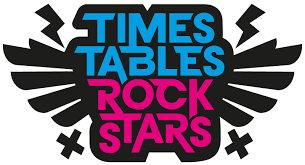
TTRS
All children in Years 2-6, have their own person login for TTRockstars to practise the recall of their multiplication and division facts. The facts that are presented to them are personalised for each individual child.
Weekly year group tournaments are set, with prizes for one class in each year group at the end of each half term. Bi-weekly certificates are also awarded for various reasons:
- those with the most coins earnt;
- making the most progress
- being a star and making a huge effort

Aims for mathematics
Our aims, adopted from the National Curriculum for mathematics are as follows:
- Be fluent in the fundamentals of mathematics
- Reason mathematically
- Solve problems by applying their mathematics
These are at the core of our mathematics culture. We are confident that, by following these aims, we enable children to develop their cognitive skills which can be applied to other curriculum areas and all aspects of life.
SToC's Aims
Reading: We recognise the important role that a good vocabulary and reading comprehension plays in solving problems, in particular worded problems. They help our children to understand the issues being presented to them by distinguishing between what is known and what is being asked. This aids our children in being able to translate worded problems into mathematical models.
Inclusion: Everyone can do Maths! Each and every one of our children are on the same learning journey, with the same learning opportunities, throughout our school. We recognise that children grasp concepts at different paces yet all children become masters of the curriculum, with those who rapidly grasp a concept delving deeper.
Growth Mindsets: Our vision and culture provides all children with an inter-connected and creative mathematics curriculum that excites curiosity and a belief that everyone can do Maths!
Links to the wider curriculum
Our children are provided with a wide variety of opportunities to apply their learning, deepen their understanding and also appreciate the purpose of what they have been learning. Examples of this includes: using reasoning skills to decipher what a number of Neolithic artefacts are and their purpose, along with timelines and Roman numerals in history; understanding and using measures in geography; making estimates of time/distance/weight in design and technology; geometric understanding in art; algebraic understanding in music; geometric understanding in art; position and direction in PE and computing and collecting, presenting and analysing data in science.


The first few years of a child’s life are especially important for mathematics development. Our goal is to ensure that all children in the Early Years develop firm mathematical foundations in a way that is engaging, and appropriate for their age.
There is a large focus on understanding number, with the help of ‘Numberblocks’, and number bonds to and within 10, which introduces calculation.
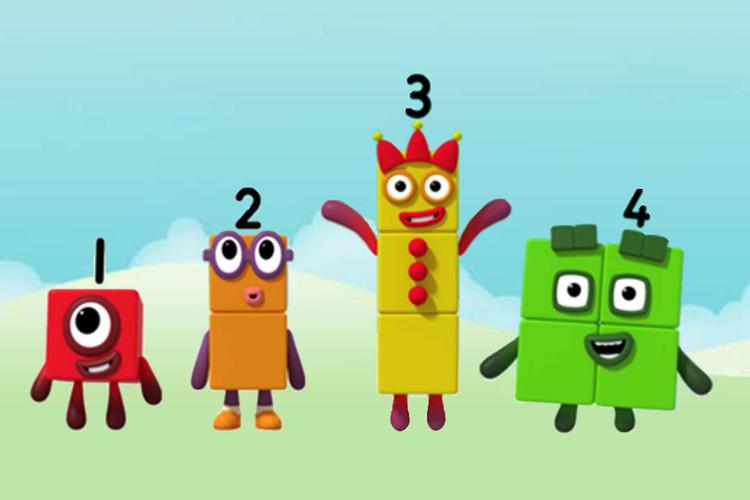
There are six key areas of early mathematics learning, which collectively provide a platform for everything children will encounter as they progress through their maths learning at St Thomas of Canterbury RC Primary School, and beyond:
1. Cardinality and Counting
Understanding that the cardinal value of a number refers to the quantity, or ‘howmanyness’ of things it represents
2. Comparison
Understanding that comparing numbers involves knowing which numbers are worth more or less than each other
3. Composition
Understanding that one number can be made up from (composed from) two or more smaller numbers
4. Pattern
Looking for and finding patterns helps children notice and understand mathematical relationships
5. Shape and Space
Understanding what happens when shapes move, or combine with other shapes, helps develop wider mathematical thinking
6. Measures
Comparing different aspects such as length, weight and volume, as a preliminary to using units to compare later


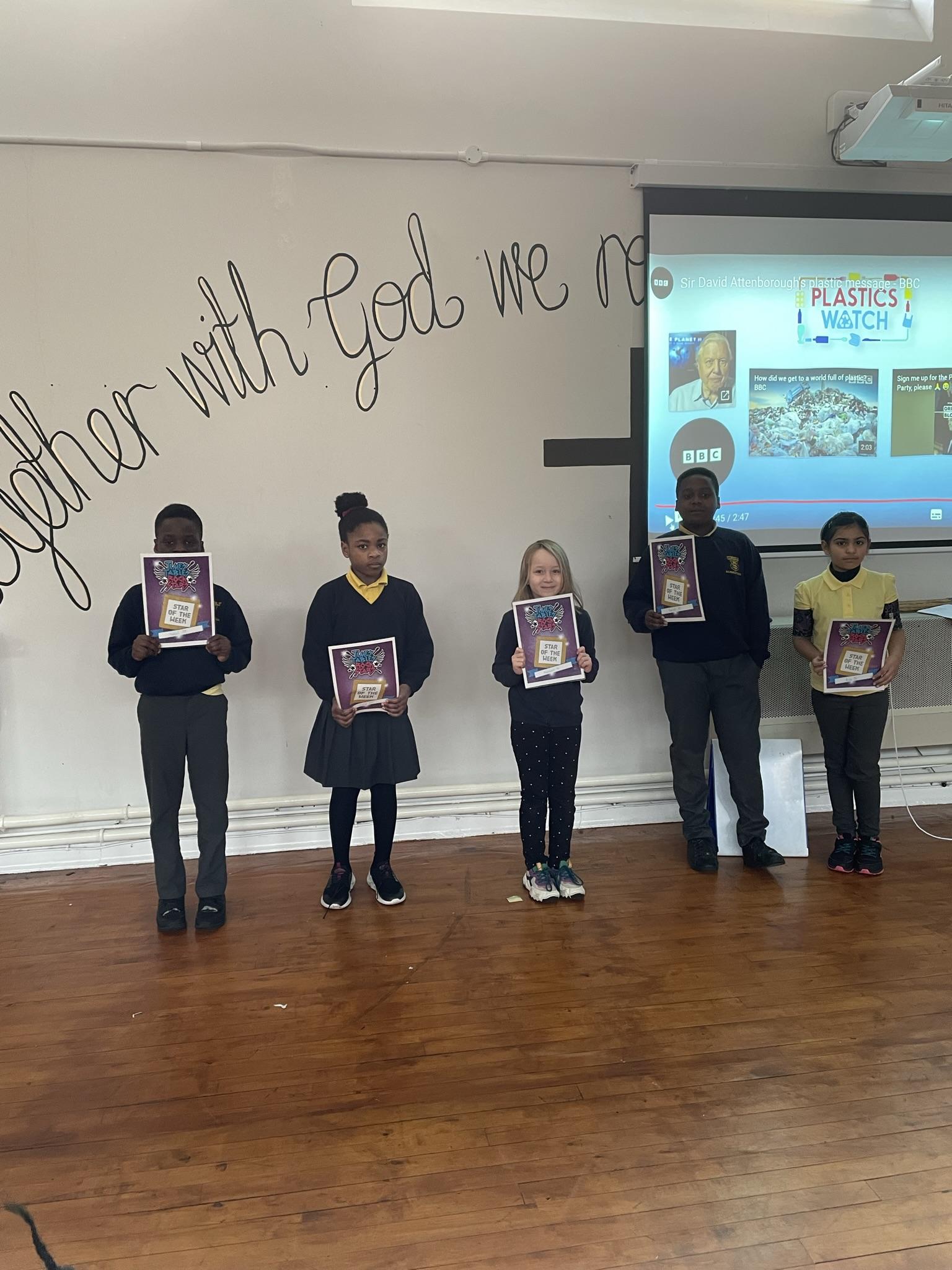
Examples of children talking through their maths
Year 2: rounding
Year 4: estimating
Multiplication and Division Facts
STOC WORLD CUP!
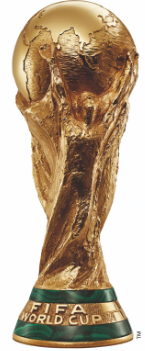
These children have already achieved their end of year expectations and have joined the STOC World Cup. A huge well done for all of your hard work in noticing patterns, developing a deep understanding of the concept and practising, practising and practising!
Year 4
-
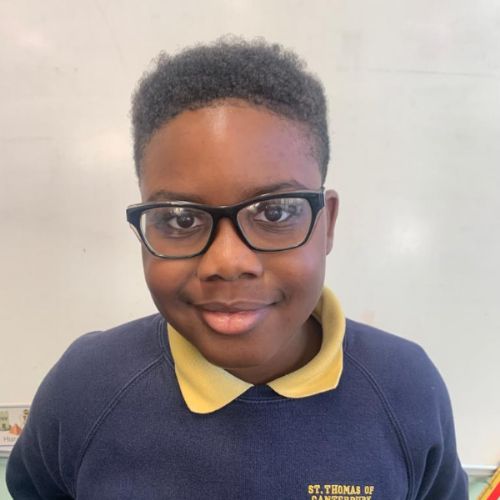
5eabd781-0d50-4753-8c6c-2d8b51417631.jpg
-
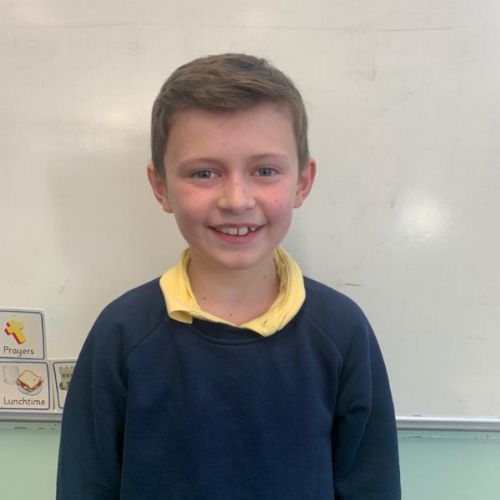
9e315de5-a69d-49d8-8fb7-53fa63b7e011.jpg
-
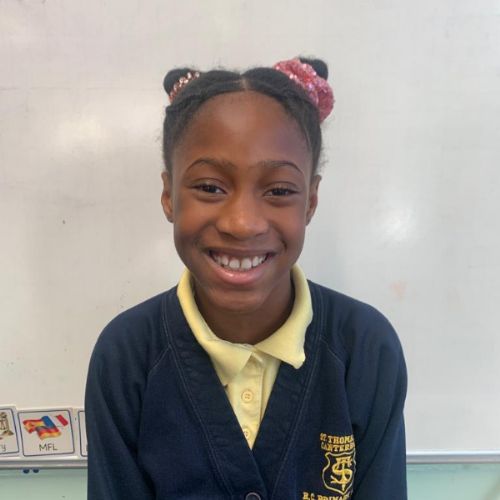
723f8cad-6e8e-4d87-9362-bc1e253ac8db.jpg
-
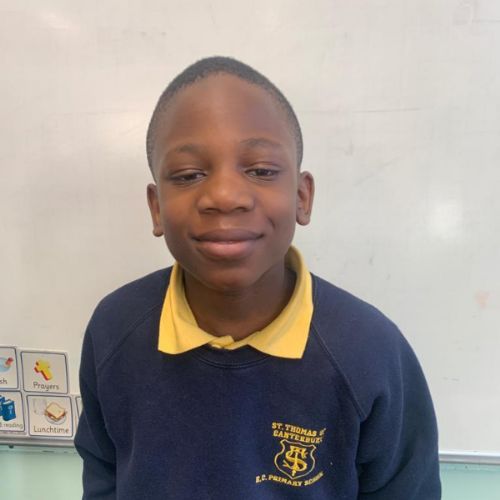
3644a2c4-93bb-4aa3-b25a-fcd46570b3fb.jpg
-
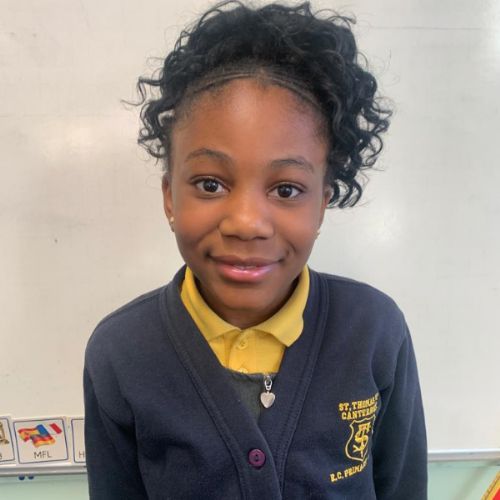
a9935154-9673-4d5a-b570-9bb445226950.jpg
-
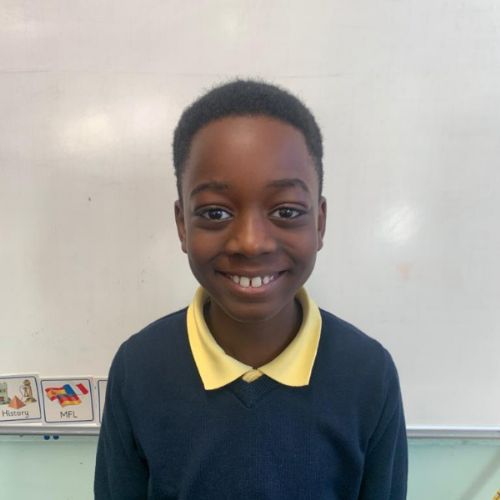
c780d51e-1b18-4839-b75a-7a349b564b05.jpg
-
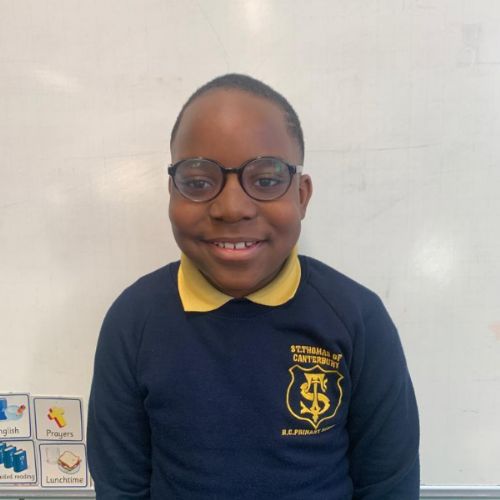
f37ae2d8-c693-4877-ac46-00866f3030dc.jpg
-
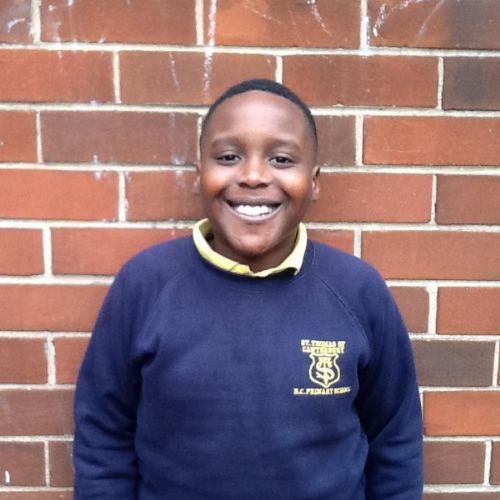
IMG_1470.JPG
-
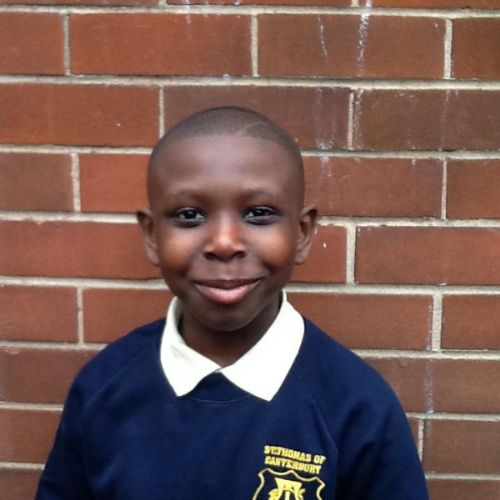
IMG_1471.JPG
-
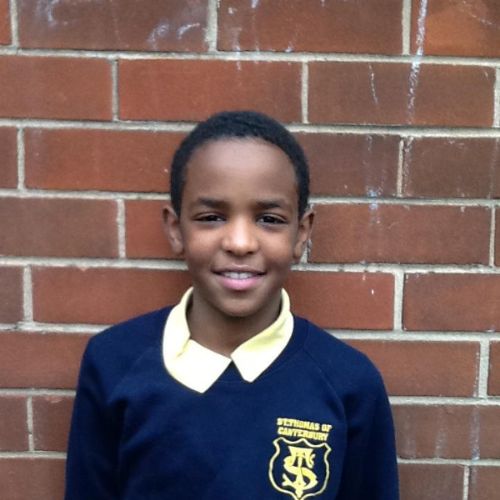
IMG_1472.JPG
-
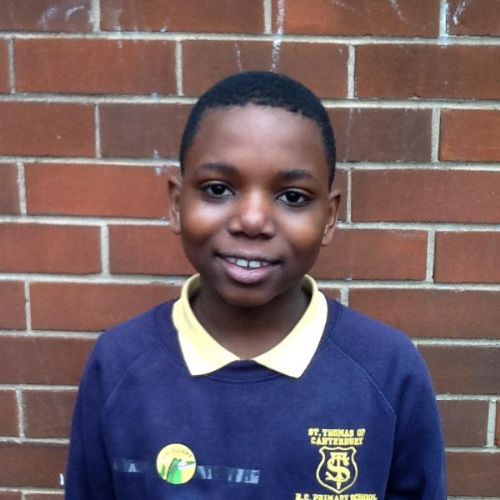
IMG_1474.JPG
-
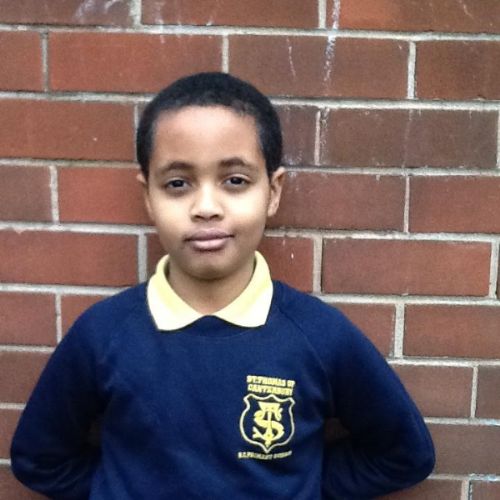
IMG_1475.JPG
-
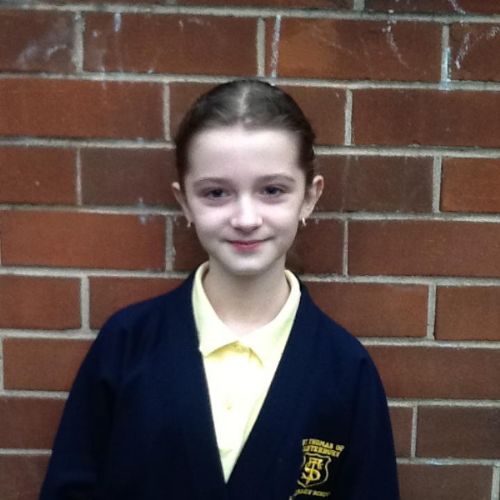
IMG_1476.JPG
-
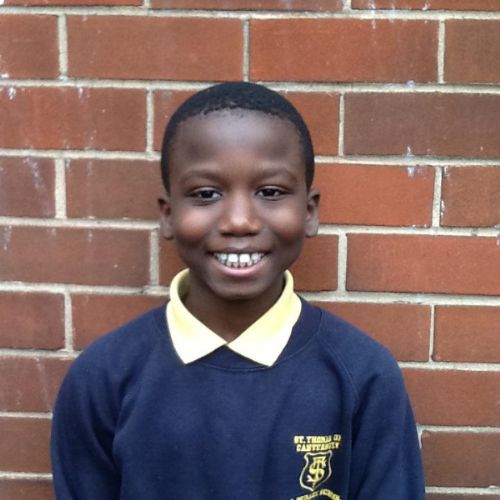
IMG_1466.JPG
-
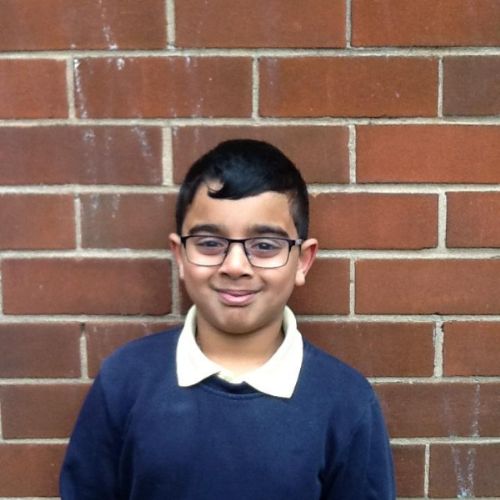
IMG_1467.JPG
-
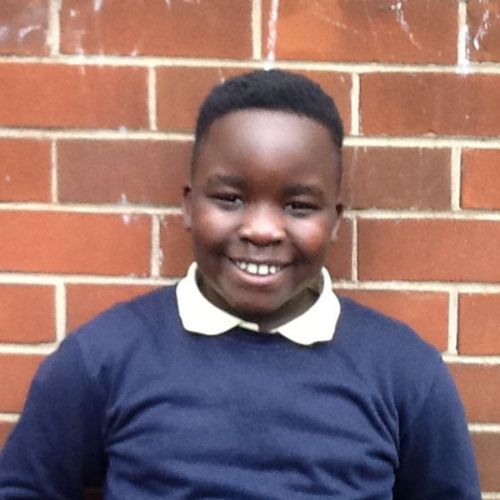
IMG_1468.JPG
Year 5
-
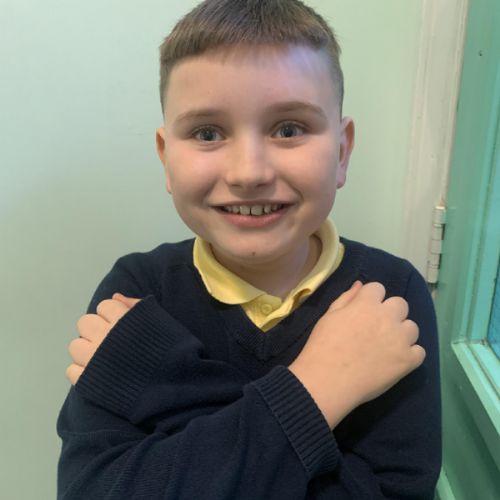
IMG_6948.JPG
-
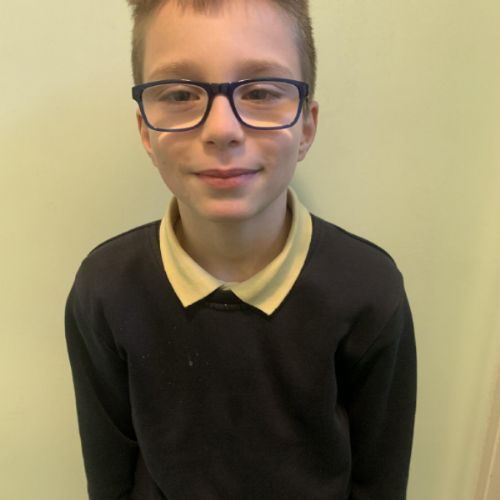
IMG_6949.JPG
-
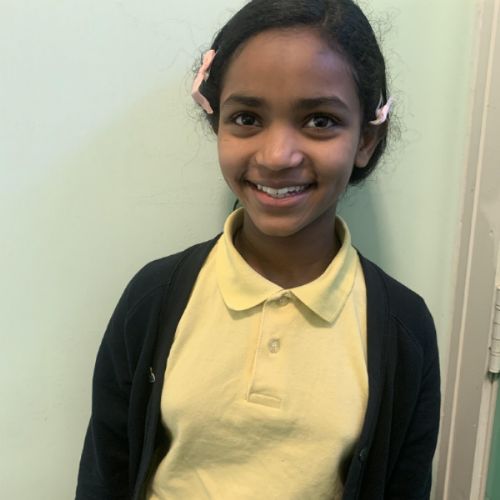
IMG_6927.JPG
-
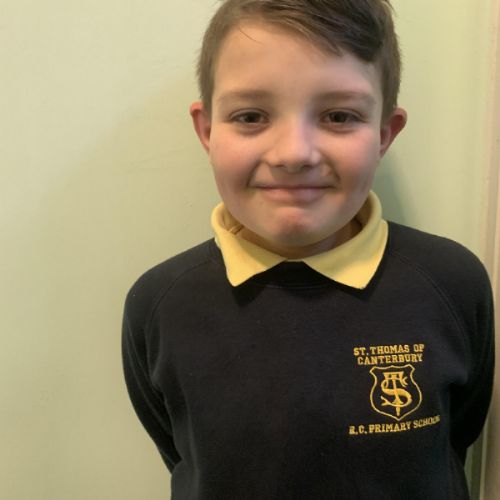
IMG_6930.JPG
-
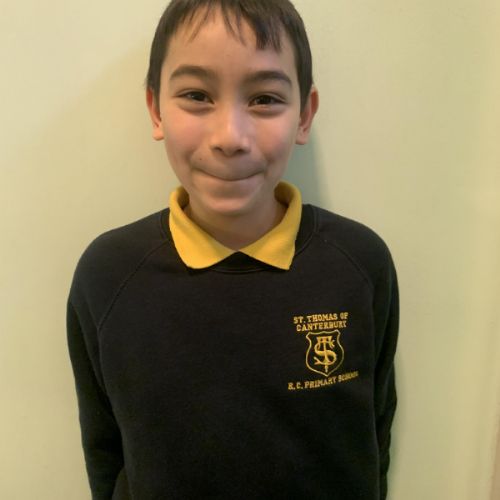
IMG_6931.JPG
-
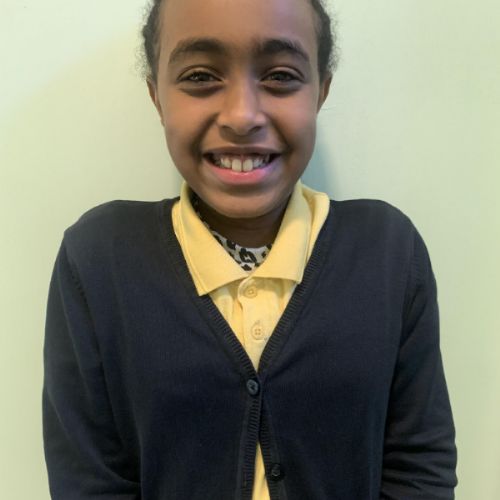
IMG_6932.JPG
-
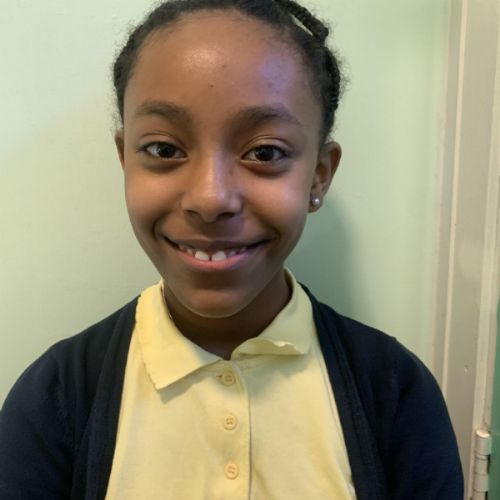
IMG_6934.JPG
-
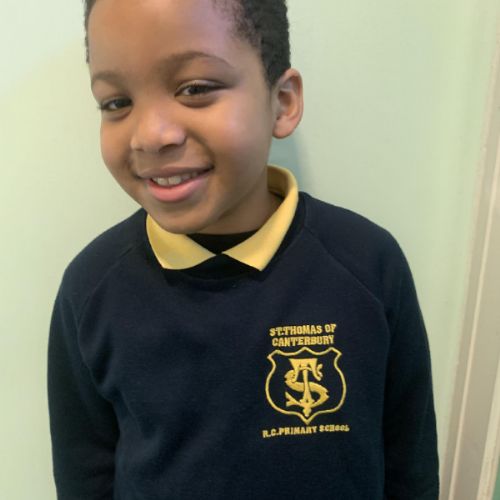
IMG_6936.JPG
-
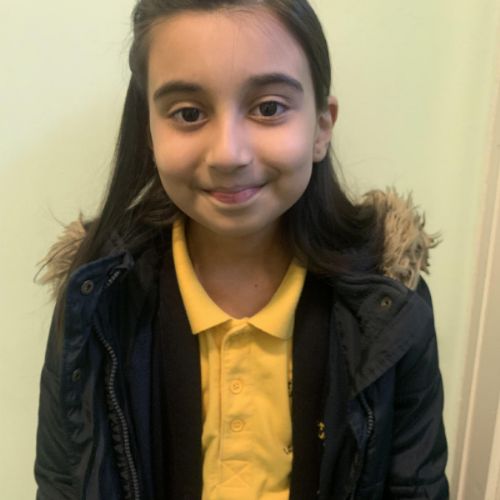
IMG_6937.JPG
-

IMG_6939.JPG
-
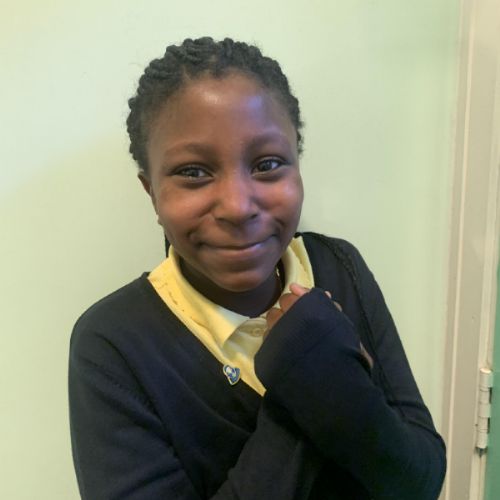
IMG_6941.JPG
-

IMG_6942.JPG
-
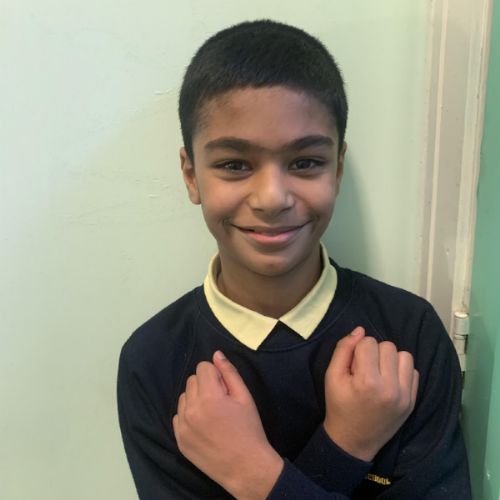
IMG_6943.JPG
-
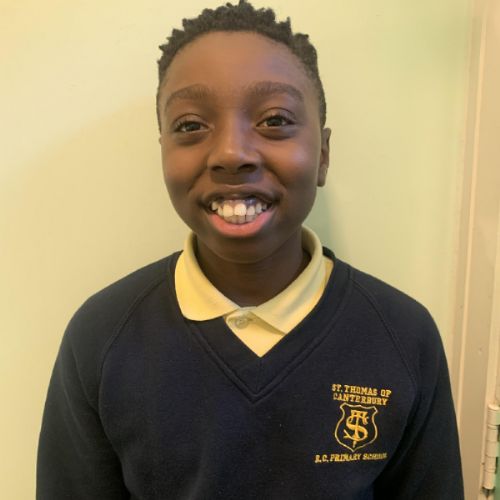
IMG_6944.JPG
-
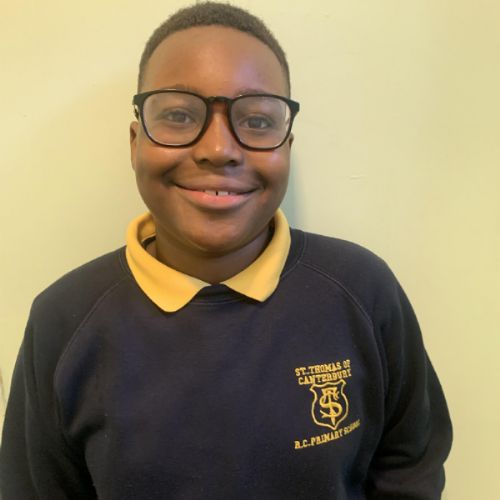
IMG_6946.JPG
-

IMG_6947.JPG
-
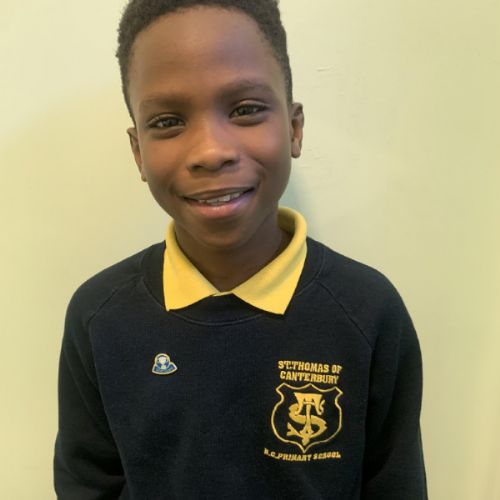
IMG_6956.JPG
-
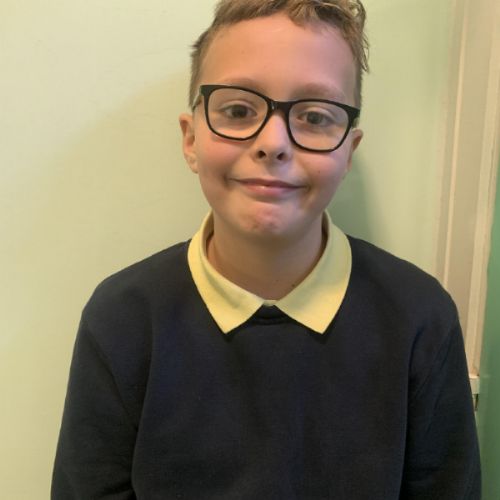
IMG_6958.JPG
-
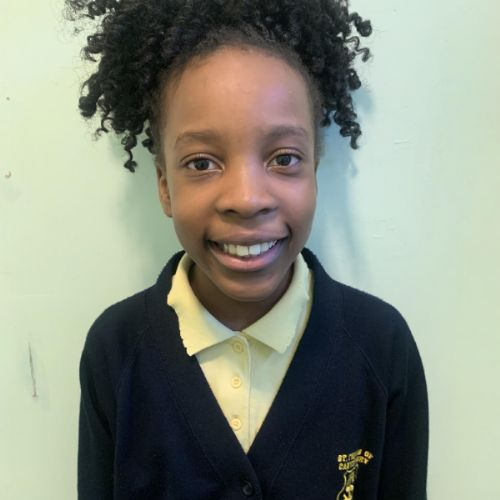
IMG_6959.JPG
-
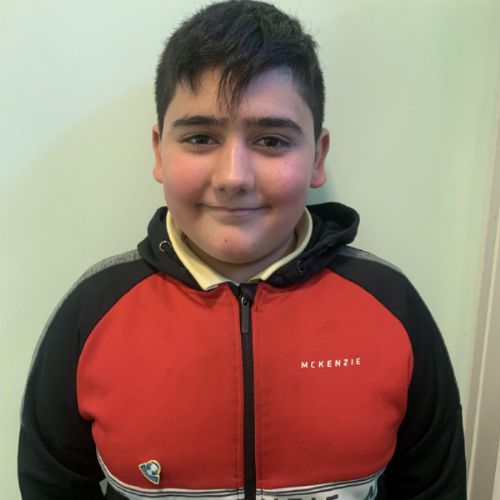
IMG_6964.JPG
-
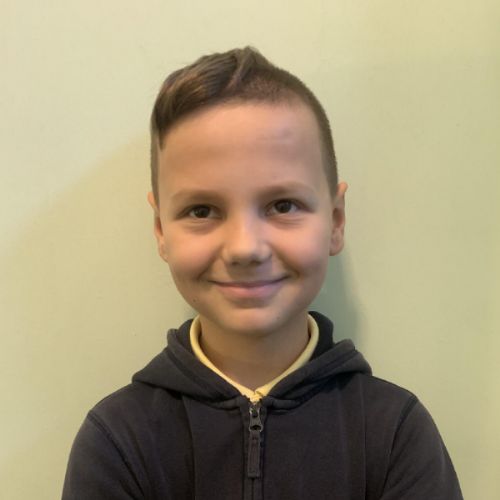
IMG_E6957.JPG
-
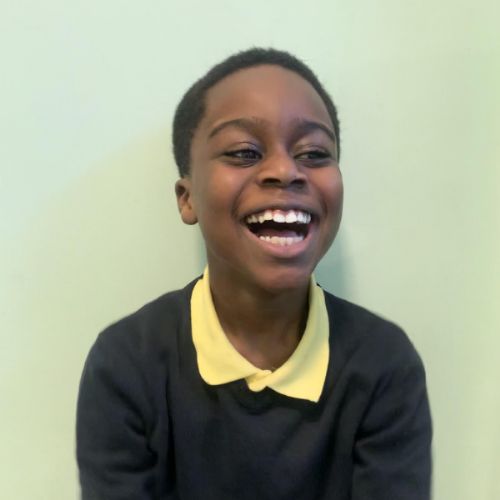
IMG_E6961.JPG
-
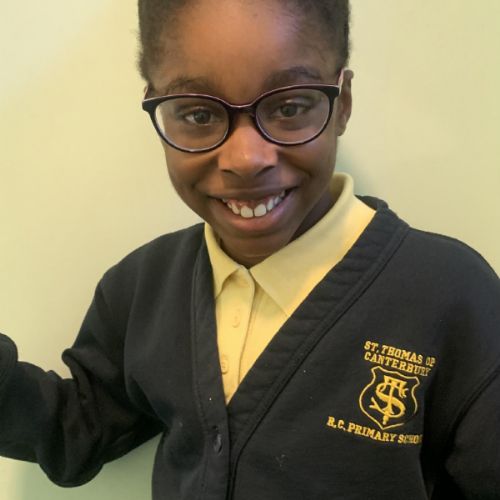
IMG_E6965.JPG
-
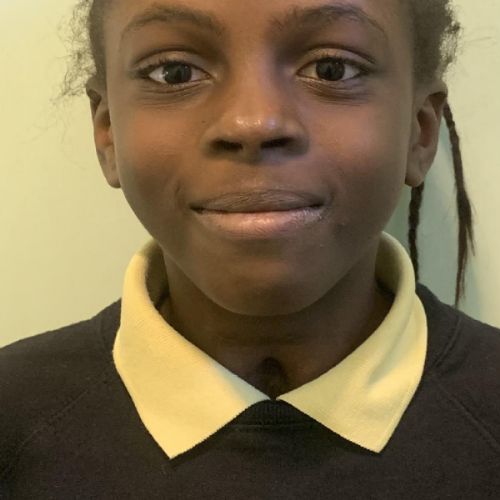
IMG_E6966.JPG
-
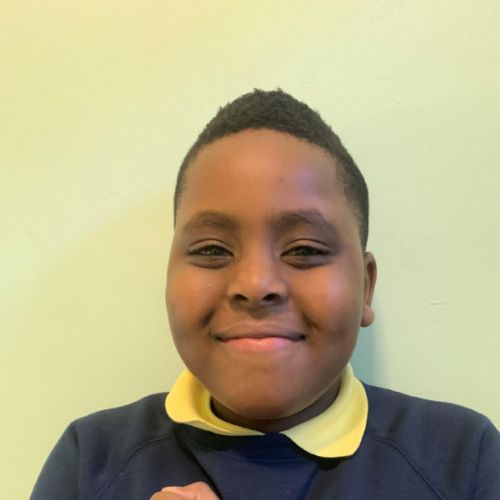
Matthew.jpg
-
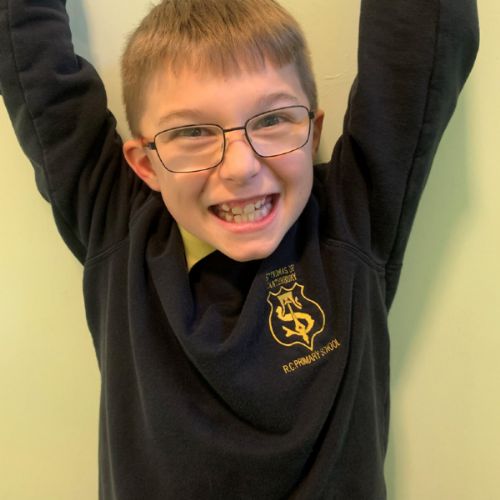
dylan.jpg
-
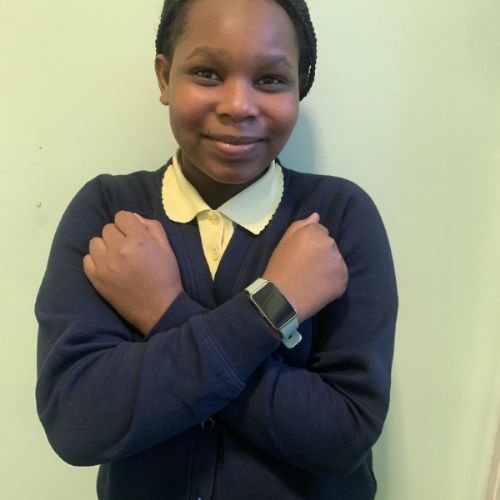
IMG_6951.JPG
-
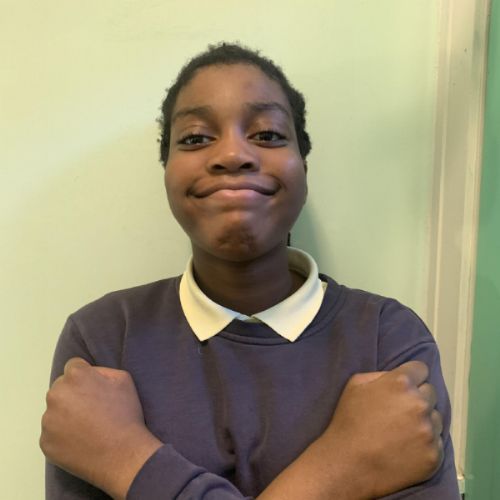
IMG_6952.JPG
-
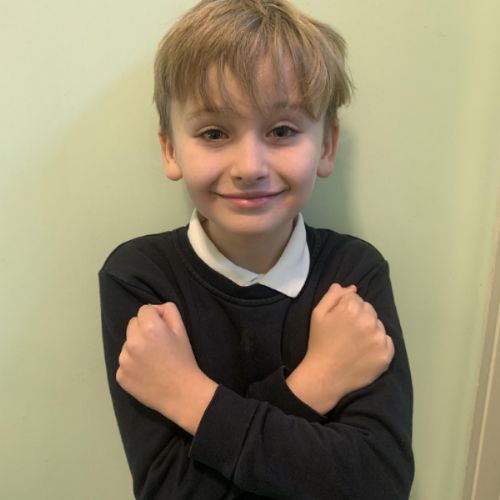
IMG_6953.JPG
-
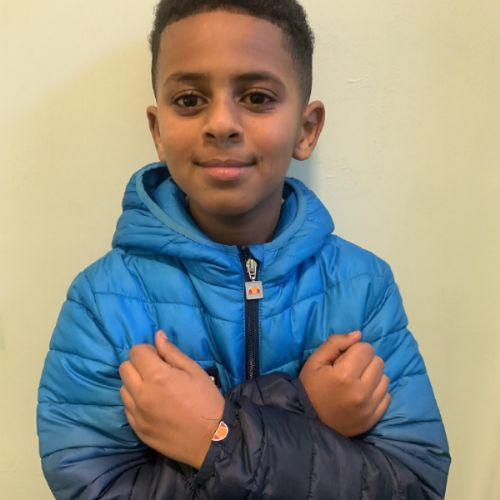
IMG_6955.JPG

Useful, free websites that support learning in mathematics:

Formative Assessment
Throughout each element of maths learning - including maths lessons, mental & oral counting and 4 rules - the teachers are trained to continually assess the understanding of each child. If a child is not secure, an intervention takes place, usually later in the day, to ensure they can then move on to the next step in learning. They are then able to build fluency, support any misconceptions and develop their reasoning and problem solving skills in a tailored approach. This way of assessing is integral to the curriculum, ensuring that all pupils build a deep understanding.
Summative Assessment
At three points in the year, the teachers will track each child in their class. This will be an accumulation of test scores, pupil books, pupil responses and day to day lessons. The Sheffield STAT materials (see below) are used to guide teachers. This data helps to target pupils who may be off-track and then offer the targeted support that they need.

We all use maths every day, often without realising it. Helping your child feel confident about maths now gives them a head start. Changes in teaching methods from when we were at school can be one of the scariest things about trying to help our children with their learning; however, even if you don’t know the newer methods, you can still support your child with maths.
